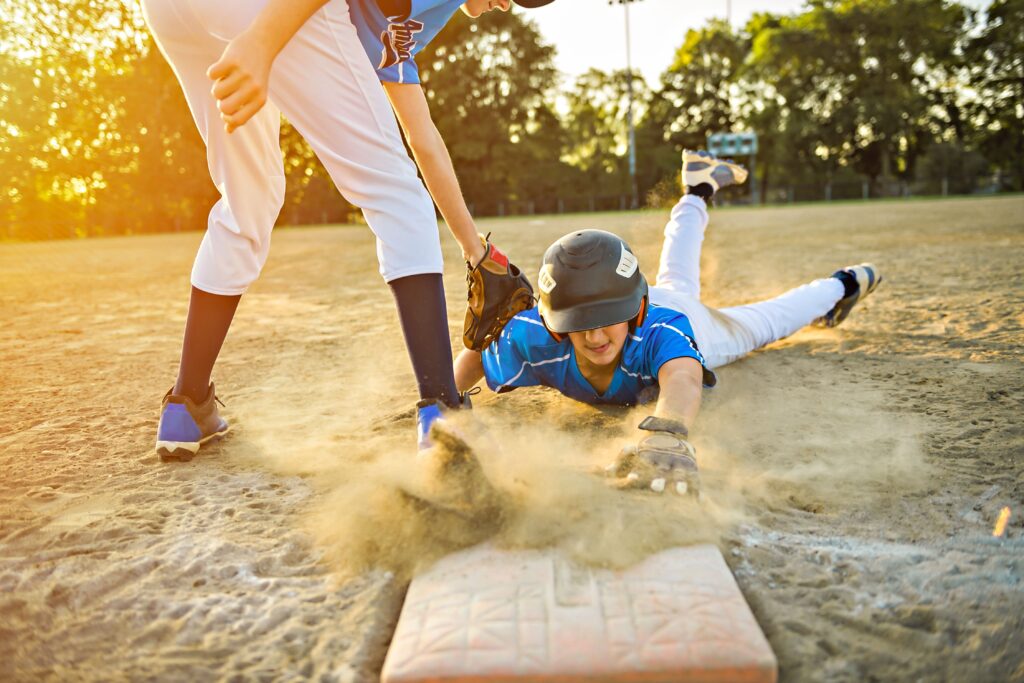When you think about athlete recovery, trusted therapy plays an essential role that often gets overlooked. It's not just about patching up injuries; it's about creating a personalized recovery plan that addresses your unique needs and circumstances. Skilled therapists can help you navigate the complexities of physical and mental healing, ensuring you come back stronger and more resilient. But what specific therapies are most effective, and how can they change the way you approach your recovery? The answers might surprise you and reshape your understanding of the recovery process.
The Role of Physical Therapy
Physical therapy plays an essential role in helping athletes recover from injuries and enhance their performance. When you face an injury, whether it's a sprain, strain, or something more severe, physical therapy becomes your best ally in regaining strength and mobility. Your therapist will assess your condition, identify the underlying issues, and create a personalized recovery plan tailored to your needs.
You'll work on targeted exercises designed to improve your flexibility, strength, and balance. These exercises not only help you heal but also prevent future injuries by addressing muscle imbalances and enhancing overall body mechanics. You'll learn proper techniques to guarantee that your movements are safe and effective, which is crucial when you return to your sport.
Additionally, physical therapy focuses on pain management. Your therapist will employ various modalities, such as ultrasound, electrical stimulation, or manual therapy, to alleviate pain and promote healing. This hands-on approach can greatly shorten your recovery time and get you back on the field or court faster.
Moreover, physical therapy isn't only about recovery; it's about performance enhancement too. Through specialized training techniques, you can improve your athletic abilities, making you stronger and more resilient than before.
Mental Health Considerations
While physical recovery is essential, mental health plays an equally important role in an athlete's journey. You mightn't realize it, but your mental state profoundly influences your overall performance and recovery. When you face an injury, the emotional toll can be just as taxing as the physical pain.
It's imperative to prioritize mental well-being alongside physical rehabilitation.
Here are some key mental health considerations for athletes:
- Emotional Support: Surround yourself with supportive friends, family, and teammates who understand your struggles.
- Open Communication: Don't hesitate to discuss your feelings with coaches or mental health professionals. It can be a game-changer.
- Mindfulness Practices: Incorporate techniques like meditation or yoga to help manage stress and anxiety during your recovery.
- Set Realistic Goals: Focus on small, achievable milestones to keep your motivation high and foster a sense of accomplishment.
- Stay Connected: Maintain a connection to your sport through social media or community events to keep your passion alive, even while sidelined.
Recognizing and addressing mental health is essential for your recovery. Ignoring it can lead to longer healing times and increased risk of future injuries.
Embracing a holistic approach that values both body and mind won't only support your recovery but also enhance your performance once you're back in the game.
Importance of Injury Prevention
Injury prevention is essential for your athletic success and longevity.
By understanding common injuries and implementing effective training techniques, you can considerably reduce your risk of setbacks.
Don't underestimate the importance of stretching; it's a simple yet powerful tool in keeping your body healthy and ready to perform.
Understanding Common Injuries
Athletes often face the risk of injuries that can sideline their performance and disrupt their training routines. Understanding common injuries is essential for you to stay ahead of the game and maintain your physical health.
By recognizing the signs and symptoms, you can take proactive steps to prevent further complications.
Here are some common injuries you might encounter:
- Sprains: Often occur in ankles or knees due to sudden twists or falls.
- Strains: Can happen when muscles are overstretched or torn, commonly in the back or legs.
- Tendinitis: Inflammation of tendons, usually from repetitive motions, affecting shoulders, elbows, or knees.
- Stress Fractures: Small cracks in bones, often resulting from overuse, particularly in feet or shins.
- Contusions: Bruises from direct blows or impacts, affecting muscles and tissues.
Effective Training Techniques
Preventing injuries during training is just as important as understanding them. You need to adopt effective training techniques that prioritize safety and performance. Start by setting realistic goals and gradually increase intensity, duration, and frequency of your workouts. This progressive approach helps your body adapt without overwhelming it, reducing the risk of injuries.
Incorporate cross-training into your routine to strengthen different muscle groups. This not only improves overall fitness but also minimizes the likelihood of overuse injuries. Pay attention to proper form and technique during exercises; poor mechanics can lead to unnecessary strain on your body. If you're unsure, consider seeking guidance from a qualified coach or trainer.
Listen to your body. If you experience pain or discomfort, don't push through it. Take a break and assess the situation—rest is just as important as training.
Additionally, make sure you're using the right equipment for your sport, as this can greatly impact your performance and safety.
Lastly, maintain a balanced training regimen that includes strength, endurance, and agility work. By prioritizing these techniques, you'll not only enhance your performance but also protect yourself from injuries, paving the way for a successful athletic career.
Importance of Stretching
Incorporating stretching into your routine is essential for enhancing flexibility and reducing the risk of injuries. When you take the time to stretch, you're not just warming up your muscles; you're preparing your body for the physical challenges ahead.
Stretching can lead to better performance, helping you achieve your athletic goals while keeping injuries at bay.
Here are some key benefits of stretching:
- Improves Flexibility: Regular stretching increases your range of motion, allowing for better movement in your sport.
- Reduces Muscle Tension: It helps alleviate tightness, making your muscles more relaxed and less prone to strains.
- Enhances Blood Circulation: Stretching promotes blood flow, which aids in muscle recovery and nutrient delivery.
- Boosts Performance: Increased flexibility can lead to improved athletic performance by enabling more efficient movements.
- Lowers Injury Risk: By preparing your muscles and joints, you decrease the chances of injuries during training or competition.
Make stretching a non-negotiable part of your routine. Your body will thank you, and you'll be on your way to safer and more effective training sessions.
Benefits of Alternative Therapies
Exploring alternative therapies can lead to remarkable benefits for recovery and performance. As an athlete, you know how essential it's to stay at the top of your game. Integrating alternative therapies into your routine can enhance your physical and mental well-being, paving the way for quicker recovery times and improved performance.
One of the key benefits is reduced muscle tension. Techniques like massage therapy, acupuncture, or even yoga can alleviate tightness and soreness, allowing your muscles to recover faster. When your body feels relaxed, you'll perform better and with greater ease.
Another advantage is improved mental clarity. Practices such as meditation and mindfulness can help you manage stress and enhance focus. As you dial in your mental state, you'll find that your training sessions become more productive and enjoyable.
Alternative therapies can also help you address specific injuries. For instance, physical therapy techniques can target areas of concern while promoting overall mobility. This personalized approach can greatly reduce your risk of re-injury.
Moreover, these therapies often emphasize holistic wellness. By addressing not just your physical needs but your emotional and psychological health too, you're fostering a more balanced recovery process. This can lead to long-term benefits, ensuring you stay resilient throughout your athletic career.
Incorporating alternative therapies into your recovery plan can be a game-changer. By exploring these options, you're investing in your health and performance, ultimately setting yourself up for success in your athletic endeavors.
Building a Support System
An athlete's success often hinges on the strength of their support system. You mightn't realize it, but the people around you can greatly impact your recovery and overall performance. A solid support system guarantees you stay motivated, focused, and resilient through challenges, whether physical or emotional.
To build this essential network, consider including the following key individuals:
- Coaches: They provide guidance, feedback, and motivation tailored to your needs.
- Teammates: They can share experiences, provide camaraderie, and foster a sense of belonging.
- Family: Their unconditional support helps maintain your mental well-being and offers a safe space for you to express emotions.
- Therapists: Trusted professionals can help address physical injuries and emotional hurdles, guiding you towards recovery.
- Friends: They provide a balance in your life, reminding you to have fun and take breaks when needed.
Creating a diverse support system allows you to lean on different individuals for various aspects of your recovery. Each person plays a unique role in your journey, helping you maintain a balanced perspective.
When you face setbacks, their encouragement can be the difference between giving up and pushing through.
Personalized Recovery Plans
Creating a personalized recovery plan is essential for your specific needs as an athlete.
By focusing on tailored approaches and injury-specific strategies, you can optimize your recovery process.
This targeted method not only enhances your performance but also helps prevent future injuries.
Tailored Approaches for Athletes
Personalization is key when it comes to recovery plans for athletes, as each individual's needs and goals vary considerably. A tailored approach guarantees that your recovery process is as effective and efficient as possible.
By focusing on your unique circumstances, you can enhance your performance and overall well-being.
Here are some factors to take into account when creating your personalized recovery plan:
- Current Fitness Level: Assess where you're at right now to set realistic goals.
- Injury History: Take into account any past injuries that may influence your recovery.
- Sport-Specific Demands: Different sports require different physical capabilities; tailor your plan accordingly.
- Lifestyle Factors: Your daily routine, nutrition, and mental health all play a role in recovery.
- Support Systems: Identify who can help you, whether it's a coach, therapist, or fellow athletes.
Injury-Specific Strategies
When dealing with injuries, it's vital to adopt strategies that specifically target your condition. A one-size-fits-all approach won't cut it; you need a personalized recovery plan tailored to your unique needs. Start by consulting with a trusted therapist who can assess your injury and develop a focused strategy.
For instance, if you're dealing with a sprained ankle, your recovery plan might include a combination of rest, ice, compression, and elevation (RICE), followed by gentle stretches and strengthening exercises. This tailored approach guarantees you're addressing the underlying issues rather than just managing symptoms.
If you're recovering from a tendon injury, your strategy may involve eccentric strengthening exercises to promote healing without overloading the tissue. This is vital to avoid re-injury and guarantee a safe return to your sport.
Moreover, don't underestimate the power of nutrition and hydration in your recovery. A diet rich in anti-inflammatory foods can speed up healing, while staying hydrated helps maintain tissue elasticity.
Enhancing Performance Through Recovery
Athletes' performance hinges not just on rigorous training but also on effective recovery strategies. When you prioritize recovery, you're giving your body the chance to repair and rebuild, which ultimately enhances your overall performance.
Neglecting this crucial aspect can lead to burnout or injuries, which can set you back considerably.
Integrating trusted therapy into your recovery routine can provide numerous benefits that contribute to peak performance. Here are some key elements to focus on:
- Rest and Sleep: Prioritize quality sleep to allow your body to recover and regenerate muscle tissue.
- Nutrition: Fuel your body with the right nutrients to promote healing and energy replenishment.
- Hydration: Stay well-hydrated to support cellular function and reduce fatigue.
- Active Recovery: Incorporate light activities like stretching or yoga to maintain blood flow and flexibility without overexerting yourself.
- Therapeutic Techniques: Utilize methods like massage therapy or physical therapy to alleviate muscle tension and enhance circulation.
Conclusion
To sum up, trusted therapy is essential for your recovery as an athlete. It not only helps you heal physically but also supports your mental well-being, ensuring you bounce back stronger. By focusing on personalized treatment plans and injury prevention, skilled therapists guide you through the recovery process, enhancing your overall performance. Embracing a holistic approach to therapy fosters resilience and prepares you for a successful return to your sport. Prioritize your recovery and trust the process!



